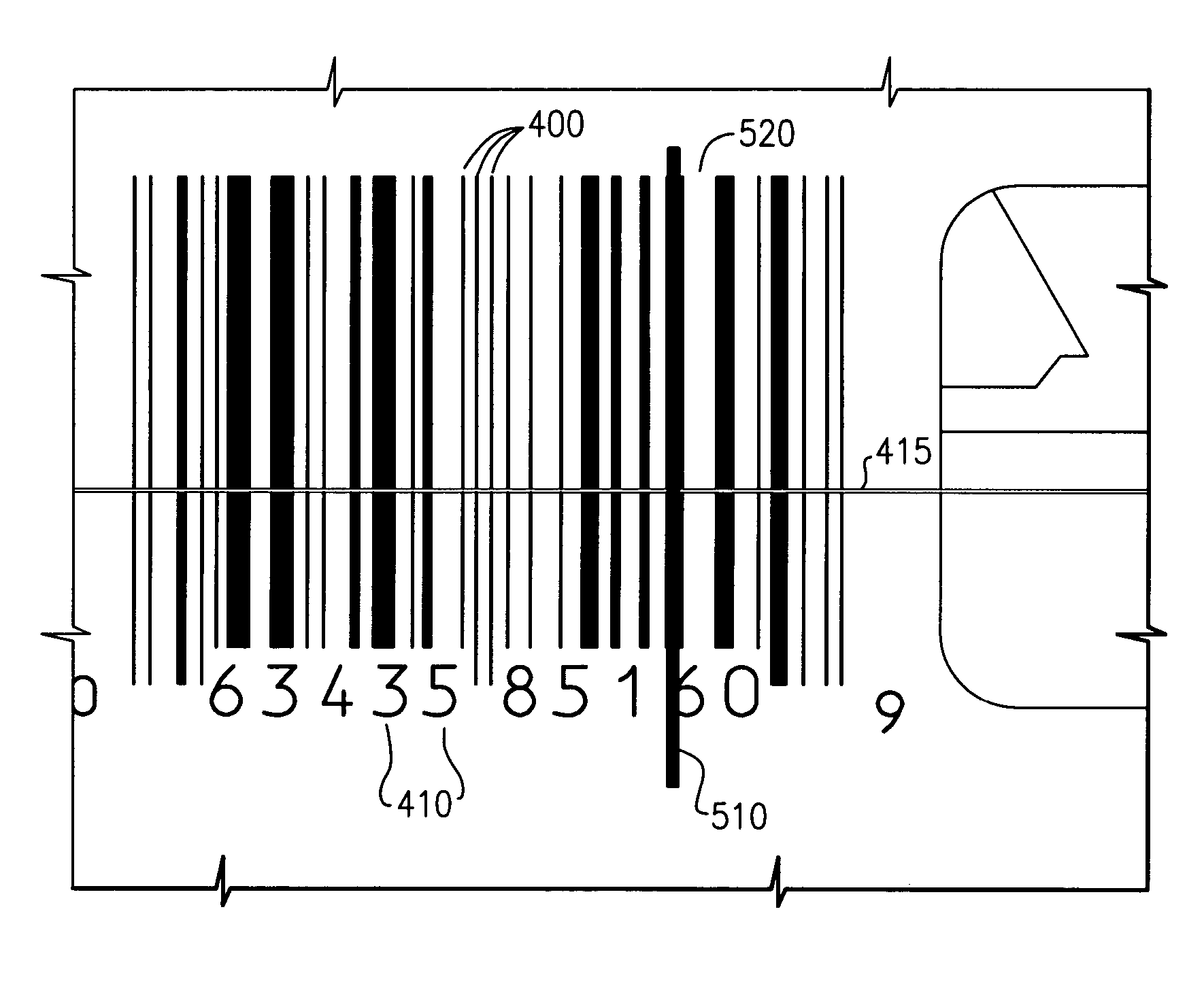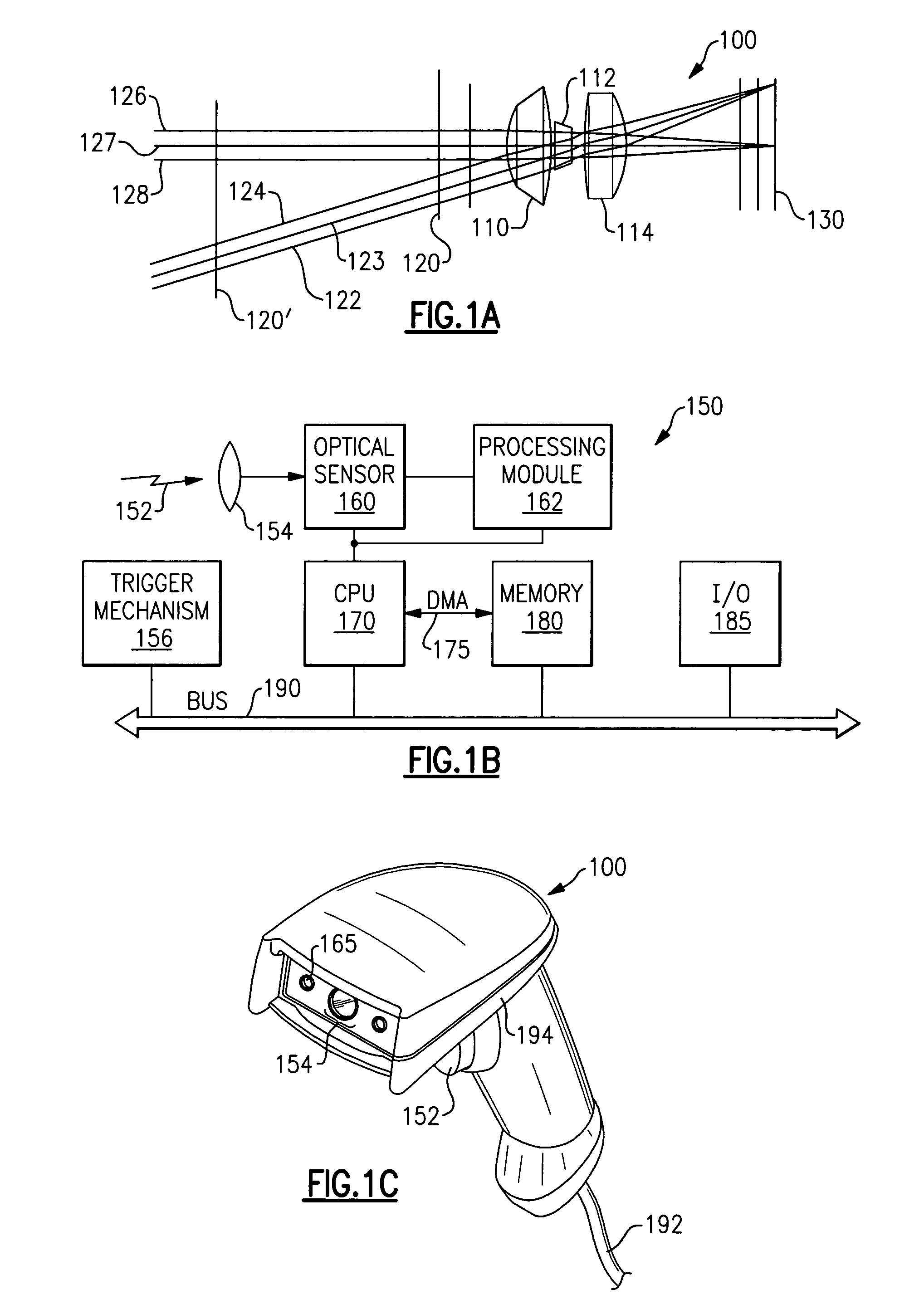Synthesis decoding and methods of use thereof
a synthesis and image technology, applied in the field of decoding images, can solve the problems of difficult image restoration, large and unrealistic value assigned, and inability to use inverse filters
- Summary
- Abstract
- Description
- Claims
- Application Information
AI Technical Summary
Benefits of technology
Problems solved by technology
Method used
Image
Examples
Embodiment Construction
[0030]The present invention provides systems and methods for decoding optical indicia, such as barcodes, which are physically situated beyond the designed limits of the depth of field of a reader or imager, or which are degraded with respect to valid optical indicia. As will be explained in greater detail below, an imager or reader that is used to “read” an indicium such as a barcode at a position farther away than the designed distant depth of field limit, or which has been degraded, will obtain a distorted signal. In similar manner, a reader that is used to “read” an indicium at too close a distance, or at a distance less than the designed near depth of field limit, will observe a truncated signal (e.g., will see only a portion of the indicium at one time, much as if one viewed a scene through a keyhole). In either circumstance, using conventional decoding systems and methods, the reader will in most situations fail to provide a suitable decoded signal, and often will simply repor...
PUM
 Login to View More
Login to View More Abstract
Description
Claims
Application Information
 Login to View More
Login to View More - R&D
- Intellectual Property
- Life Sciences
- Materials
- Tech Scout
- Unparalleled Data Quality
- Higher Quality Content
- 60% Fewer Hallucinations
Browse by: Latest US Patents, China's latest patents, Technical Efficacy Thesaurus, Application Domain, Technology Topic, Popular Technical Reports.
© 2025 PatSnap. All rights reserved.Legal|Privacy policy|Modern Slavery Act Transparency Statement|Sitemap|About US| Contact US: help@patsnap.com



